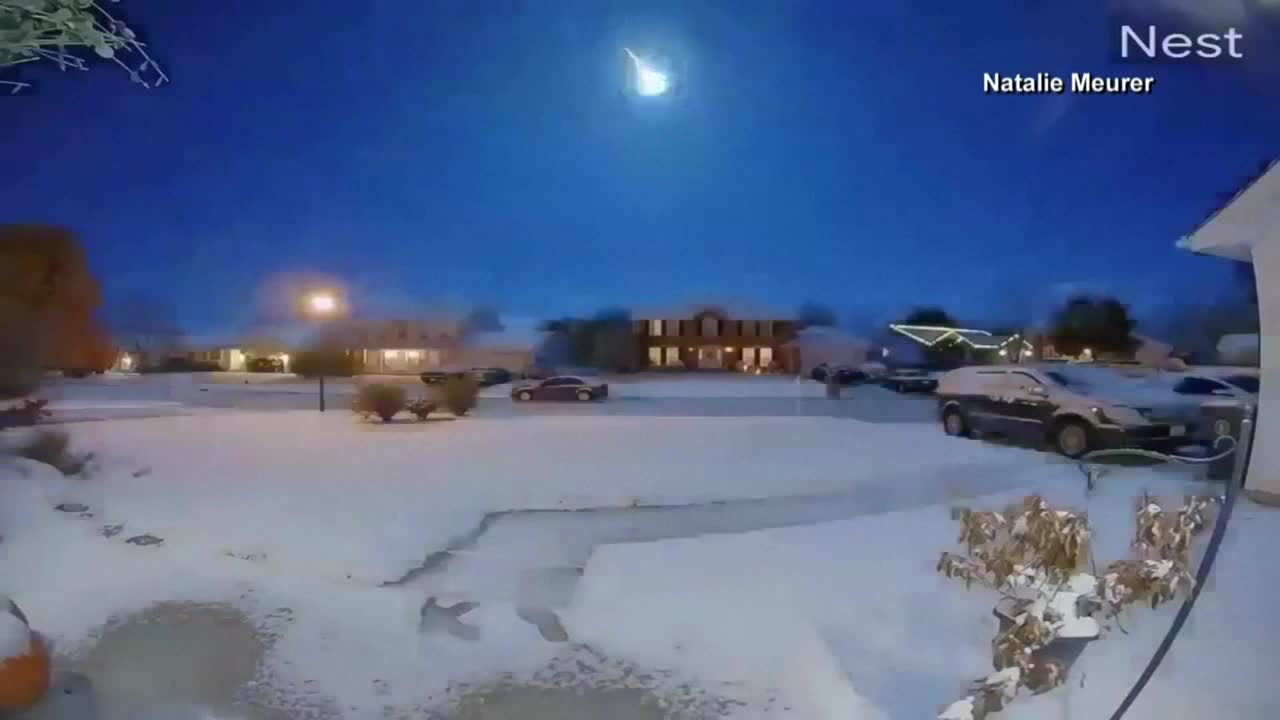Both stations reported that local residents saw a flash of light and loud noise at about 8:55 p.m. local time (9:55 p.m. ET). Twitter user David Vergel posted footage from an EarthCam aimed at the city's iconic Gateway Arch of the object streaking through the atmosphere, while other locals appear to have picked up the event on home security cameras. The Northern Taurid meteor shower, which is known for brighter-than-usual meteors called fireballs, was expected to peak on Monday night into the early hours of Tuesday with St. Louis just on the eastern edge of the highest visibility region on the map, KSDK reported.
I was watching an @EarthCam camera from St. Louis, Missouri about 30 minutes ago and saw a #meteor! pic.twitter.com/PVAvIGlALF
— David Vergel (@DavidVergel97) November 12, 2019
Meteor flying overhead from east to west in O'Fallon, MO this evening just west of St. Louis. #stlwx #mowx pic.twitter.com/0IX2fppoEd
— Tom Stolze (@ofallonweather) November 12, 2019
8:51 pm @ring doorbell cam Wentzville area pic.twitter.com/L2faUee2rD
— Mike Heffner (@hughtrain) November 12, 2019
#BREAKING: Video of large fireball that soared over the skies of St. Charles County around 8:50-8:55 tonight. People tell @ksdknews the bright light was followed by a loud boom that shook violently. This is from viewer Tim Maudlin. pic.twitter.com/FvdYhOhWew
— Rob Edwards (@RobertDEdwards) November 12, 2019
This is particularly lucky sighting, as while the Taurids tend to give a spectacular show, seeing one is relatively unlikely (let alone in an area with high light pollution).
"The Taurids are rich in fireballs, so if you see a Taurid it can be very brilliant and it'll knock your eyes out, but their rates absolutely suck," NASA meteor expert Bill Cooke told Space.com. "It's simply the fact that when a Taurid appears it's usually big and bright."
The National Weather Service's St. Louis division tweeted that while it was unlikely that the object made it to the ground intact, they were not aware of whether it had. Somewhere between 90 and 95 percent of meteors burn up in the atmosphere before hitting the ground, though University of the Republic in Montevideo, Uruguay astronomer Gonzalo Tancredi estimated earlier this year that approximately 6,100 objects large enough for fragments to strike the ground hit the planet annually. However, humans only occupy a vanishingly small percentage of Earth by surface area, so the vast majority of these impacts are never directly witnessed.
According to KSDK, the next meteor shower scheduled to strike the planet is the Leonids on the night of Nov. 16, followed by a month-long gap until the Geminids fly by in mid-December.




Reader Comments
to our Newsletter